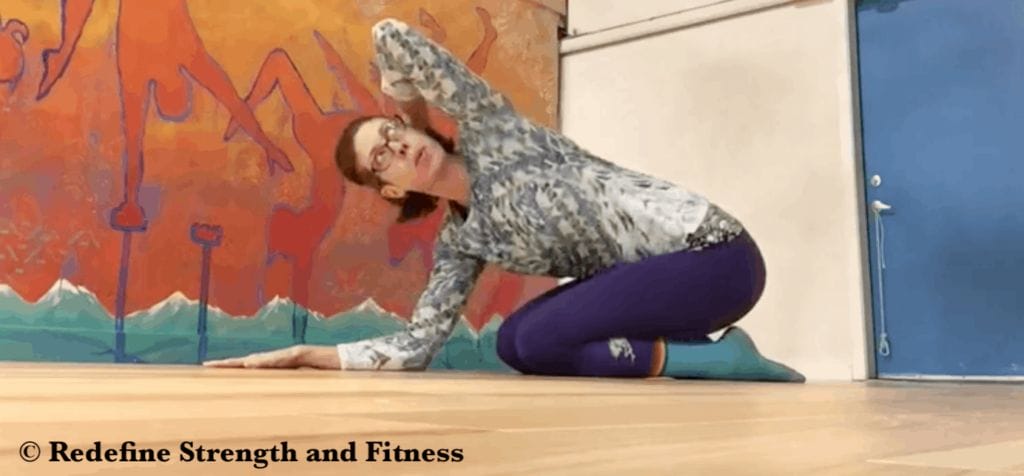Let’s dive right in shall we.
1) Breathing.
Yep, breathing. Most specifically diaphragmatic breathing, or deep belly breathing. This way of breathing taps into our parasympathetic nervous system which helps reduce muscle tension throughout the body. The breathing drill below, the 90/90 Belly Breathing, also focuses on the abdominal contraction to assist the end of exhalation to active rib cage depression. For circus athletes this is the upper body portion of the hollow and where hollow activation begins.
This abdominal contraction is what is needed for core activation for all fitness and circus movements. At the end of your exhale you should feel how the abdominals are braced and if you were to poke up and down your abdomen from the base of your ribs to your hip bones, you would feel the resistance of the muscle contractions.
On the inhale, release the abdominal contraction and feel the belly expand as the diaphragm contracts and expands into the abdomen. Exhale and repeat.
Adding this to your warm-up or even several times a day will help decrease muscle tension especially around the shoulders and back because it resets the ribs to a better position over the pelvis, improving posture and can have a positive effect on stress levels. Perform 5-8 breath cycles.
2) Foam Rolling of your Upper Back and Lats.
Foam rolling can be done as part of your warm-up and/or part of your cool-down. I would definitely include it in your warm-up for training, but foam rolling after a training sessions isn’t bad or feel free to just step away from work and take five minutes to foam roll.
Foam rolling helps reduce muscle tone (tension) by sending a signal to your nervous system to relax a little as well as helping hydrate the muscles with water and oxygenated blood.
Remember you want to continue using deep diaphragmatic breathing while foam rolling. Drink about 8oz of water before rolling. And move slowly, about one inch per second. Feel free to set an interval timer so you don’t foam roll one area more than 30 seconds. More is not always better. Make sure also to avoid foam rolling over bones, rolling is soft tissue work.
Here are two videos:
One of foam rolling the mid-back along the spine, the soft tissue between the shoulder blades and the spine. The other video demonstrates several ways to roll the lats and posterior cuff area of the shoulder area.
3) T-spine Rotation.
Improving your thoracic spine (t-spine) rotational mobility actually improves your scapula’s ability to move on the rib cage. Increasing t-spine rotation also increases its ability to create some more extension, which also helps scapula movements, but also can improve back bending.
In this day and age where many of us sit over our desks or laptops, the t-spine has gotten a bit locked up. Adding this mobility drill will help improve overhead range of motion (ROM) and overall spine health.
There are two different mobility drills in the video below. Include one or both drills into your warm-up or just randomly throughout your day if you find you’ve been sitting too long, especially over a computer.
As with foam rolling, you want to continue your deep belly breathing. On each rotation, do a big exhale out your mouth between pursed lips, like you’re blowing out ALL of your birthday candles. Feel ALL of your abdominals contract towards the end of the exhalation and then inhale and return to the starting position. Perform 5-8 rotations to each side.
As always, if you have questions on any of the specifics of the movements from above, please contract us or leave a comment. If you need a bit more help with specific programming we also offer training programs, see below.
Happy Training, Theresa

